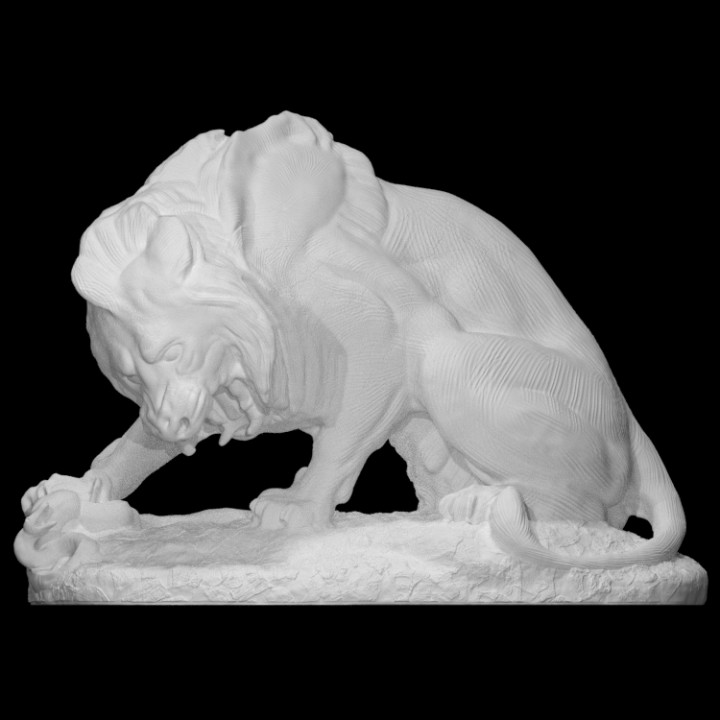
Lion and Serpent at The Louvre, Paris
myminifactory
An awe-inspiring figure of a wild roaring lion pins a serpent to the ground with unyielding force. The lion's head is thrown back, jaws wide open, as he unleashes his fury upon the reptile. Owing to its remarkably lifelike rendering of both animals and the intense struggle depicted, this sculpture sparked widespread controversy among the public and critics alike. True to life Barye sculpted animals with unprecedented realism. First, they were the central focus of his work, not merely accessories. Secondly, his interpretation was rooted in a meticulous analysis of nature's every detail. He sought to convey an illusion of fur, lifelike movements, and the untamed essence of the animals. The lion has substantial mass; one can feel the muscles rippling beneath his thick coat. Alongside painter Delacroix, Barye spent countless hours studying, drawing, and even dissecting animals in the Jardin des Plantes to master their anatomy. However, the sculptor was no prisoner of scientific knowledge: he recreated nature with the artistic means at his disposal. He occasionally felt compelled to exaggerate a muscle, highlight the modeling, and emphasize a line to give a true impression of life. Epic inspiration Barye imbued this fight scene with an epic dimension. He captured the moment when action seems suspended in time, as if fate itself had paused to observe the two combatants. A dramatic element is added as the two animals size each other up, anticipating the frenzied struggle that will soon unfold. Although the lion holds the upper hand, he remains vigilant, evident from the way he spreads his claws, positions his tail, and bristles with fury. The tension reaches its peak. The snake, whose coiled head is thrown back in defiance, jaws wide open, readies itself to strike at the lion's face. The lion's concentrated energy is poised to respond: with a puckered muzzle, furious eye, and forepaw forcefully pinning the reptile to the ground, his body becomes pure muscle. Both animals possess the power of life and death, an awe-inspiring force that could not fail to captivate the Romantics. The size of the sculpture heightens its impact, leaving a lasting impression on all who behold it. Monarchist symbolism The lion serves as the supreme example of a monarchic animal, a symbol of unyielding power and courage. This sculpture thus also pays tribute to the July Monarchy and King Louis-Philippe, a time when widespread discontent with the regime established after the July Revolution (1830) was on the rise. The king's accession to the throne took place under the celestial bodies of Leo (the lion) and Hydra (the sea serpent). The sculpture therefore symbolizes celestial approval of this significant political change. This object is part of "Scan The World". Scan the World is a non-profit initiative introduced by MyMiniFactory, through which we are creating a digital archive of fully 3D printable sculptures, artworks, and landmarks from across the globe for the public to access for free. Scan the World is an open source, community-driven effort, if you have interesting items around you and would like to contribute, email stw@myminifactory.com to find out how you can help.
With this file you will be able to print Lion and Serpent at The Louvre, Paris with your 3D printer. Click on the button and save the file on your computer to work, edit or customize your design. You can also find more 3D designs for printers on Lion and Serpent at The Louvre, Paris.
